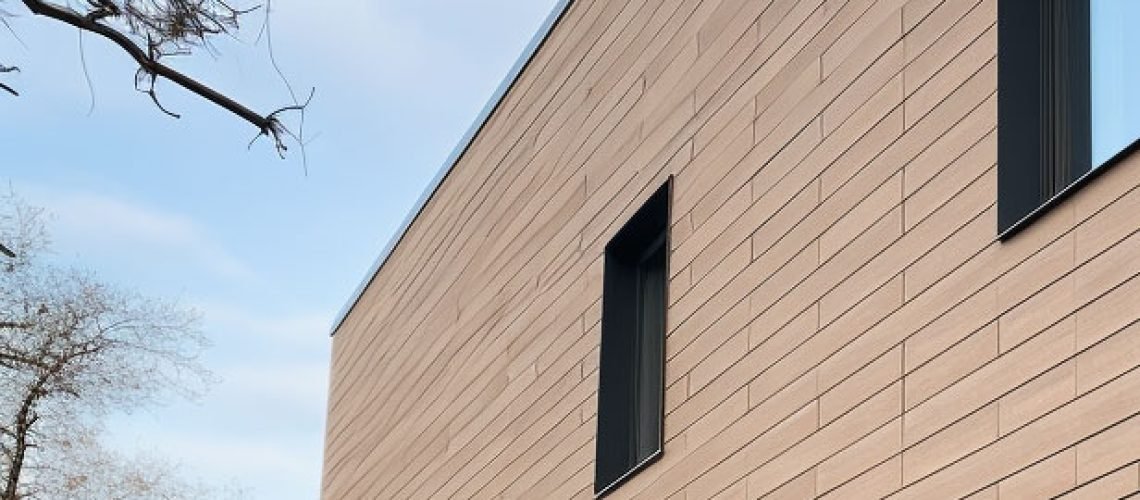Glass Fiber Reinforced Concrete (GFRC) panels have gained widespread popularity in the construction industry due to their exceptional strength, durability, and versatility. These panels are widely used in architectural facades, interior and exterior cladding, and a variety of other applications. At the heart of the remarkable properties of GFRC panels lies the inclusion of glass fibers. In this article, we will explore why glass fibers are an essential component of GFRC panels and how they contribute to the unique characteristics that make GFRC an ideal choice for modern construction projects.
Understanding GFRC Panels
Before delving into the significance of glass fibers, it’s crucial to understand what GFRC panels are and why they are preferred in construction. GFRC is a specialized type of concrete that consists of a combination of fine aggregates, cement, water, and additives. What sets GFRC apart from traditional concrete is the addition of glass fibers, which are dispersed throughout the mix. These glass fibers reinforce the concrete, imparting a range of benefits that make GFRC an attractive material for architectural and structural applications.
The Role of Glass Fibers in GFRC Panels

Enhanced Strength and Durability: One of the primary reasons glass fibers are essential in GFRC panels is their ability to significantly enhance the material’s strength and durability. The tensile strength of traditional concrete is relatively low, making it prone to cracking and breaking under stress. However, the inclusion of glass fibers provides reinforcement that allows GFRC panels to withstand greater forces without structural failure. This is especially crucial in applications where the panels are subjected to wind, seismic activity, or impact.
Reduced Weight: Glass fibers are lightweight, which is a valuable characteristic in construction. Incorporating glass fibers into the concrete mix reduces the overall weight of GFRC panels while maintaining their structural integrity. This reduced weight not only simplifies transportation and installation but also reduces the load on the supporting structure, making it a cost-effective choice for many projects.
Improved Flexibility and Versatility: GFRC panels are known for their flexibility, which allows them to be manufactured in a wide range of shapes, sizes, and textures. Glass fibers play a pivotal role in this flexibility by preventing cracking and enhancing the material’s ability to conform to complex molds. As a result, architects and designers have greater freedom in creating unique and visually appealing facades and structures.
Resistance to Environmental Factors: Glass fibers contribute to the long-term durability of GFRC panels by making them highly resistant to environmental factors such as moisture, temperature fluctuations, and chemical exposure. This resistance ensures that GFRC panels maintain their appearance and structural integrity over time, reducing maintenance costs and extending their lifespan.

Fire Resistance: Glass fibers add to the fire-resistant properties of GFRC panels. While concrete itself is inherently fire-resistant, the inclusion of glass fibers further enhances this characteristic. This makes GFRC panels a suitable choice for applications where fire safety is a concern, such as building exteriors and interior cladding.
Reduced Shrinkage and Cracking: Traditional concrete is prone to shrinkage and cracking as it cures. Glass fibers help mitigate these issues by providing internal reinforcement, minimizing the formation of cracks and reducing the likelihood of shrinkage-related problems. This is especially important in architectural applications where a smooth and flawless surface finish is desired.
Improved Impact Resistance: Glass fibers also enhance the impact resistance of GFRC panels. This is particularly valuable in areas prone to severe weather conditions or heavy foot traffic. The panels can withstand impact from hail, debris, and even accidental collisions without sustaining significant damage.
Energy Efficiency: GFRC panels, reinforced with glass fibers, contribute to the energy efficiency of buildings. Their high thermal mass helps regulate indoor temperatures, reducing the need for heating and cooling, thus leading to lower energy consumption and operational costs.
Conclusion
In conclusion, glass fibers are an indispensable component of GFRC panels, playing a vital role in their exceptional performance and versatility. These fibers enhance the panels’ strength, durability, flexibility, and resistance to various environmental factors. GFRC panels have become a preferred choice in modern construction due to their ability to combine aesthetics with functionality, and glass fibers are at the heart of these remarkable properties. As architectural designs continue to evolve, GFRC panels, reinforced with glass fibers, will likely remain a staple in the construction industry, offering sustainable and innovative solutions for the built environment.

